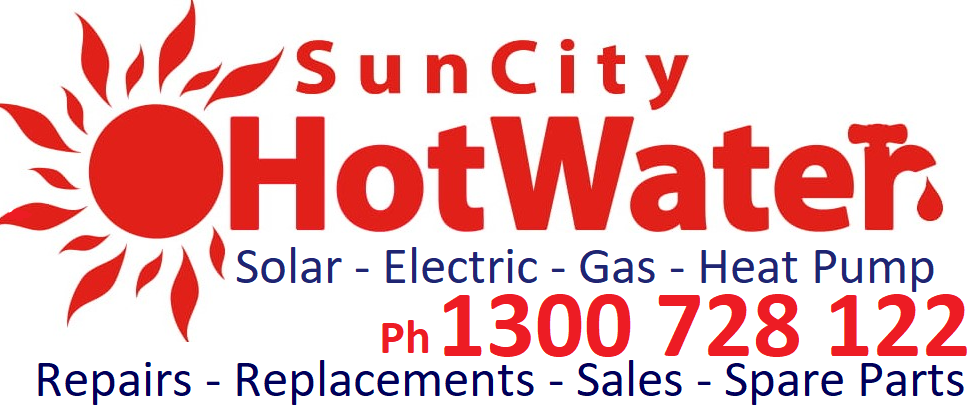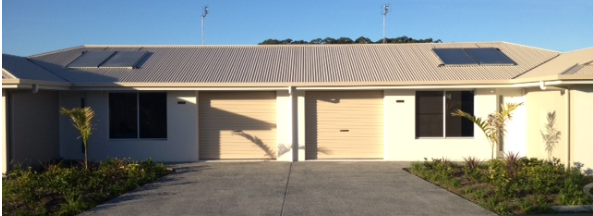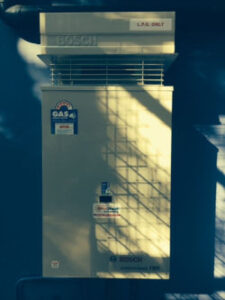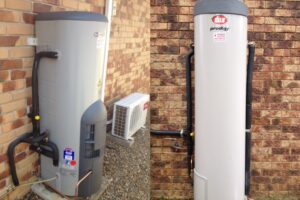On average, 25% of the total energy usage of an Australian household can be attributed to hot water usage. And with electricity costs on the rise again, it is becoming increasingly important to have an energy efficient hot water system that will meet your hot water needs without landing you with an outrageous power bill.
One of the most effective ways to reduce your quarterly energy bills is through solar power. Not only can a solar hot water system provide up to 80% of the energy needed to heat your water by harnessing free energy from the sun, if you’re environmentally conscious then you’ll also be happy to know that using a solar hot water system will dramatically reduce your carbon footprint.
However, there are many solar hot water systems on the market and it can be difficult to know which one is best for your hot water needs. The system your neighbour has could be completely wrong for your household. That’s where Sun City comes in. As hot water specialists, we are experienced with all of the major hot water systems on the Australian market. And since we have no affiliation with a single brand we can offer unbiased advice on which system is best for you.
Below is our general guide to choosing the right solar hot water system for your household. For personalised advice on the best type and size of solar hot water system for your needs call your local hot water experts at Sun City on 1300 728 122.

Types Of Solar Hot Water Systems

Solar hot water systems are made up of two major parts; the solar collector and the storage tank. There are two different types of solar collectors available; the flat plate system and the evacuated tube system.
Flat Plate Solar Collectors
Flat plate is the most common type of solar collector. As the name suggests, flat plate solar collectors are made from flat glass panels that sit directly above copper tubes. Flat plate solar collectors are most efficient when the sun is perpendicular to the flat surface. However, if you live in Australia, the best direction to have your solar collectors facing is North, as the solar collector is exposed to sunlight for the majority of the day.
Evacuated Tube Solar Collectors
Evacuated tube solar collectors are a more recent technology and are widely considered to be more effective than flat panel collectors. Similarly to flat panel collectors, in an evacuated tube system, glass tubes sit side by side to form a panel. Each tube of an evacuated tube collector contains an inner copper heat pipe, each containing a small amount of liquid, surrounded by a vacuum. There is an exchanger manifold that sits at the top of the solar collector which is used to transfer heat to the water. The round surface of the tubes on an evacuated tube solar collectors allows the sun the be perpendicular to the surface for more of the day making this system more efficient.
How Do They Work?
Flat Plate Solar System
In a flat plate solar system, the glass panels collect heat from the sun, heating the copper pipes below. Water is then circulated through the heated pipes which in turn heats the water. The heated water is then circulated through to the storage tank where it is stored until a hot water outlet is used.

Evacuated Tube Solar System
Similarly to flat plate collectors, the evacuated glass tubes of this system collect the heat from the sun. As the tubes are absorbing heat, the inner heat pipes begin to heat up causing the liquid inside to vapourize and rise to the top of the pipe. Water is then circulated through the heat exchanger manifold which is heated by the hot gas at the top of each heat pipe. Once heated, the water is then circulated through to the storage tank to be stored until a hot water outlet is used.

Flat Panel vs. Evacuated Tube Solar Hot Water Systems
| Flat Panel Solar | Evacuated Tube |
 If damaged, flat panels can be expensive to fix as, if the panel cannot be repaired, the whole panel has to be replaced If damaged, flat panels can be expensive to fix as, if the panel cannot be repaired, the whole panel has to be replaced |  Damaged tubes can be replaced individually and inexpensively rather than having to replace an entire panel Damaged tubes can be replaced individually and inexpensively rather than having to replace an entire panel |
 On average, flat plate solar hot water systems cost 20 – 40% less than evacuated tube systems On average, flat plate solar hot water systems cost 20 – 40% less than evacuated tube systems |  Can cost between 20 – 40% more than flat panel collectors Can cost between 20 – 40% more than flat panel collectors |
 Most efficient when perpendicular to the sun, however, as the panel is flat this would only be for a short period of the day Most efficient when perpendicular to the sun, however, as the panel is flat this would only be for a short period of the day |  More efficient as rounded tubes allows sun to be perpendicular to the panel for a longer period of the day More efficient as rounded tubes allows sun to be perpendicular to the panel for a longer period of the day |
 Installation requires 2 – 3 people minimum, which increases labour cost Installation requires 2 – 3 people minimum, which increases labour cost |  Can be installed by a single person for low labour costs Can be installed by a single person for low labour costs |
 Less effective in bad weather conditions and collects little to no heat in very cold conditions Less effective in bad weather conditions and collects little to no heat in very cold conditions |  Still highly effective at heating water in colder, overcast or cloudy conditions as the vacuum in the tube reduces heat loss Still highly effective at heating water in colder, overcast or cloudy conditions as the vacuum in the tube reduces heat loss |
 Relies on collecting the majority of the heat in the middle of the day when the sun is perpendicular to the panel Relies on collecting the majority of the heat in the middle of the day when the sun is perpendicular to the panel |  Collects heat throughout the majority of the day, starting as soon as the sun has risen Collects heat throughout the majority of the day, starting as soon as the sun has risen |
Call A Hot Water Specialist
The average water usage in Australia is approximately 80 litres per person, per day, however, there are many other factors that can contribute to your hot water needs. You may find that even though one system seems to be more efficient, the other will be better suited to your household’s unique requirements. The easiest way to find out which solar hot water system is best for you is to call your local hot water specialist.
With no affiliation to any single hot water manufacturer, your local hot water specialists at Sun City will be happy to recommend the best solar hot water system for you, whether that be a Solahart Thermosyphon or a Bosch panel split solar system. Call us today for expert advice and quality installations at competitive prices. We’ll even get rid of your old hot water system for you! Call 1300 728 122, today.






